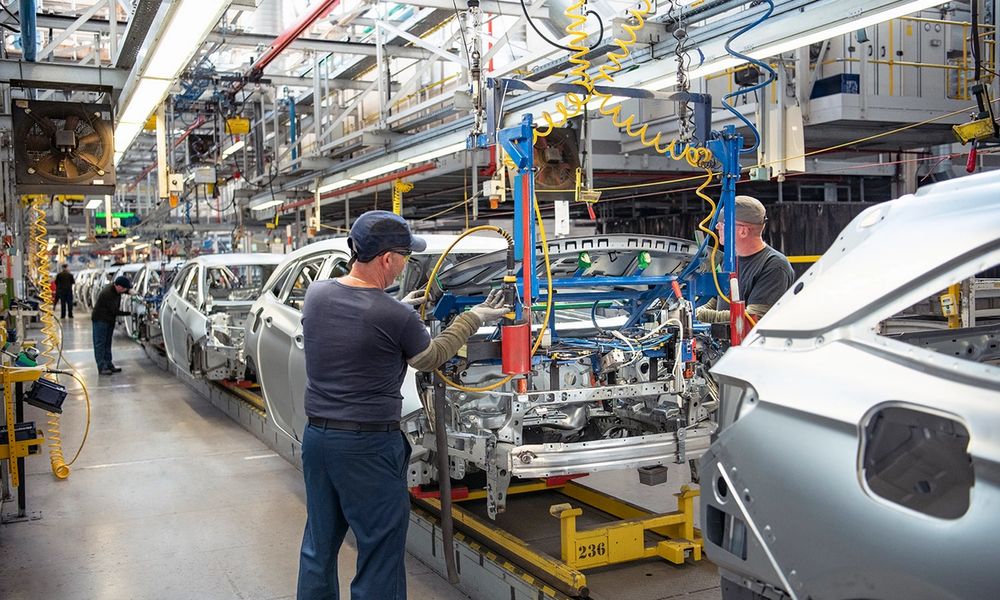President Donald Trump has touted his tariff regime as a way to bring back domestic manufacturing jobs—but experts say it’s not that simple.
One of the premises behind 25% duties on all vehicle imports is that they’ll prompt automakers to invest in US manufacturing, and therefore create new jobs in an industry that has suffered steep job losses over the last few decades.
But a number of factors stand in the way of this vision. Not only would it take years and billions of dollars to build new auto plants in the US, but the industry already struggles to attract the skilled labor it requires—and in recent years has turned to automation to meet its needs.
“Ostensibly, the automotive tariffs are designed to reshore manufacturing, and this, in theory, would lead to more jobs,” Mika Takahashi, a technology analyst at IDTechEx, told Tech Brew via email. “However, the situation is more complicated than that for several reasons.”
Time and money: One of the major barriers is the time and investment required to move production to the US. Takahashi noted that, given the “significant amount of capital” needed to build new plants, many auto executives are opting to hold off until there’s greater policy certainty.
Swamy Kotagiri, CEO of automotive supplier Magna, said at an event in April that the manufacturer’s global footprint was unlikely to change in the near term, emphasizing his view that the industry shouldn’t be reactive.
“Is there a chance in the short to medium term to look at balancing capacities where possible? Yes,” he said. But building a new plant would take about two years, and Magna was not considering any long-term strategy changes at that time.
A recent CNBC survey found that most companies are unlikely to reshore supply chains because of the steep costs of doing so.
The United Auto Workers, which represents hundreds of thousands of autoworkers in the US, has called on domestic automakers to crank up some of the unused capacity in their US plants. The union recently published a white paper citing industry data indicating that the US auto industry had the capacity to build more than 14.7 million vehicles last year, but ultimately only built 10.2 million.
“We don’t need to break ground on a single new plant to rapidly grow auto manufacturing capacity—it’s already right in front of us, in the plants we've built, the skills of our members, and the communities that depend on these jobs,” UAW President Shawn Fain said in a statement. “Instead of offshoring jobs to low-wage, high-exploitation countries, auto companies must invest here at home and rebuild the middle class with union labor.”
Keep up with the innovative tech transforming business
Tech Brew keeps business leaders up-to-date on the latest innovations, automation advances, policy shifts, and more, so they can make informed decisions about tech.
Some experts, however, say it’s not so simple.
“Just because the capacity is there doesn’t mean [it] could be filled,” Sam Fiorani, VP of global vehicle forecasting at AutoForecast Solutions, told the Detroit Free Press. “Much of the current level of employment in the industry is due to the increased automation, a point that the UAW doesn’t want to acknowledge. It takes fewer people to make a vehicle today.”
Automated: Another one of the challenges is the cost of labor, and a lack of skilled labor in a low-unemployment economy.
“US labor remains much higher cost, and it may simply be uneconomical even with tariffs to produce low-cost models in the US,” Takahashi said.
More than a fifth of respondents to CNBC’s survey said that finding skilled labor was a roadblock to reshoring supply chains. More than 80% of respondents said they would use automation more than human workers if they were to boost US manufacturing.
Kotagiri, too, acknowledged this challenge and noted that it was a pressing issue for the industry at the start of the coronavirus pandemic.
“Over the last 10 years we’ve done a lot in robotic programming, controls, and mechatronics, and [it’s] still not enough for us. And during Covid, when we started having the churn of people, it became a huge issue,” he said. “That is a huge, huge challenge that’s not being talked about.”
Already, factories are heavily automated and employ robotics alongside human workers. A recent survey from QNX found that 30% of respondents in the North American auto industry use robotics in their organization. In 2024, the US auto industry’s installations of industrial robots climbed 10.7%, according to the International Federation of Robotics.
Collaborative robots “enable these companies to scale operations more efficiently and cost-effectively, helping bridge the gap between labor shortages and growing production demands,” Takahashi said.
Gene Berdichevsky, co-founder and CEO of battery materials startup Sila, told Tech Brew that he doesn’t believe the tariffs will lead to a boom in general assembly manufacturing jobs.
“It’s a joke, and I don’t think anyone in the administration or in the world assumes that we’re going to have Americans screwing together iPhones. That’s not what’s going to happen,” he said. “General assembly will have to be automated if it’s going to reshore.”
